Emerita analoga (Stimpson, 1857)Common name(s): Pacific sand crab, sand crab, mole crab |
|
| Synonyms: Hippa analoga | 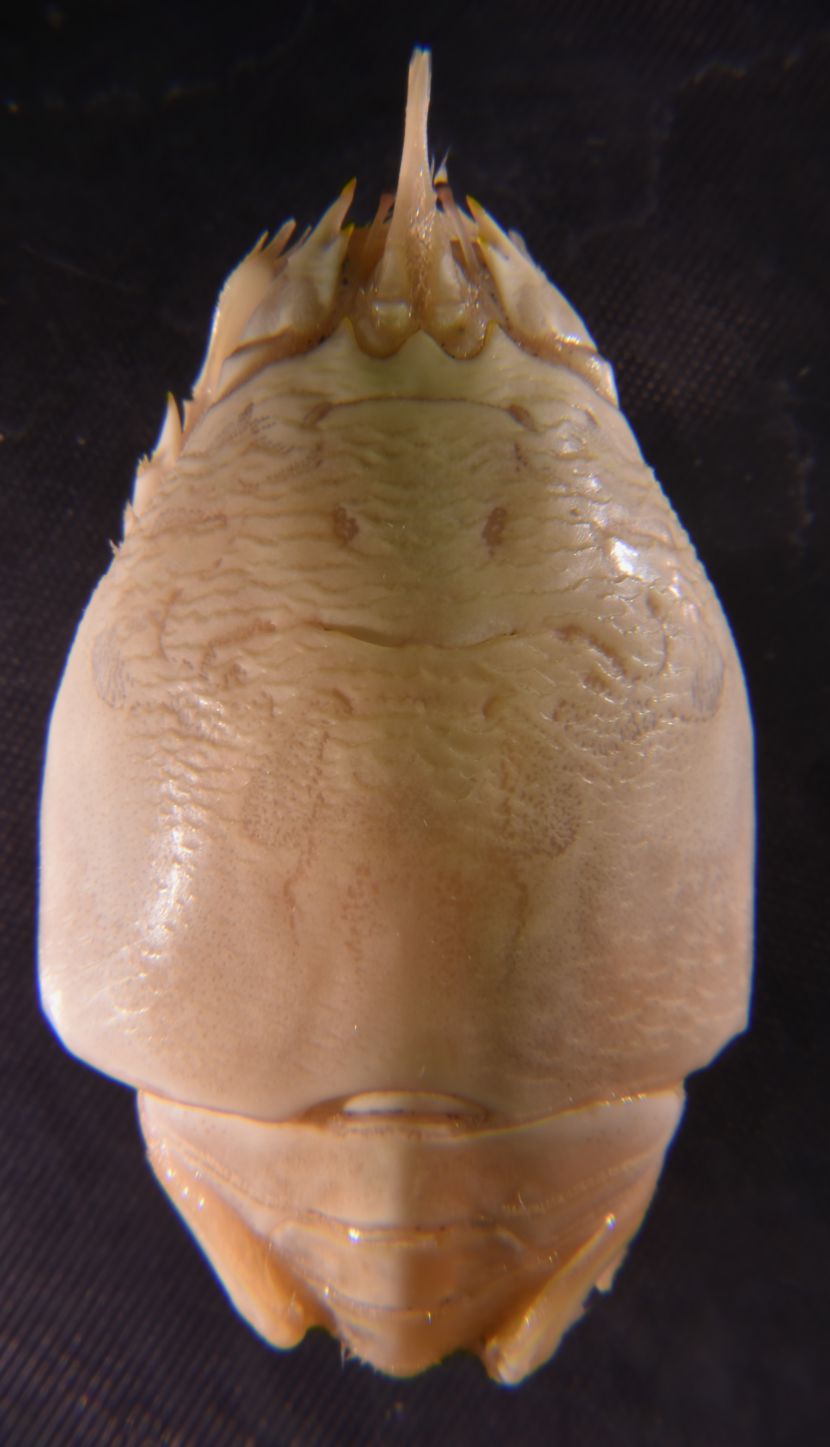 |
|
Phylum Arthropoda
Subphylum Crustacea
Class Malacostraca
Subclass
Eumalacostraca
Superorder Eucarida
Order Decapoda
Suborder Pleocyemata
Superfamily
Hippoidea
Family Hippidae
|
|
| A preserved female, 3 cm carapace length, collected at Monterey Bay. Note that the normal gray color has faded because this is a preserved specimen. This female is carrying eggs (see photo below). | |
| (Photo by: Dave Cowles, July 2016) | |
Description: The Pacific sand crab is one of the few species specializing in the swash zone of wave-swept sandy beaches. Its body is approximately egg-shaped. The carapace has three teeth in front and is smooth except for small, transverse ridges on the anterior portion. The first 4 pereopods are flattened, not chelate, and used for digging. The fifth pereopod is slender and chelate, and is used for cleaning the gills rather than for digging. The antennal flagellum is long and featherlike (used for filter feeding), but is folded beneath the mouth parts when not being used. Carapace length to 3.5 cm. The abdomen with its elongated telson (photo) is generally held reflexed underneath the thorax, but is extended for rapid digging into the sand (movie). The abdominal segments become successively smaller posteriorly (photo) but the elongated telson is large and arrowhead or long spade-shaped (photo). Both sexes have well-developed uropods but only females have pleopods (3 pairs). Carapace is gray or greenish in color. The underside is nearly white. Eggs are orange.
How to Distinguish from Similar Species: This is the only local species of Emerita. It differs from the spiny mole crab, Blepharipoda occidentalis, which has spines on its carapace and pereopods and typically lives lower in the swash zone in California.
Geographical Range: Alaska (but rarely north of Oregon) to Chile; Argentina
Depth Range: Intertidal
Habitat: Migrate up and down with the tides on sandy, wave-swept beaches. Inhabit the swash zone where the waves sweep up the beach and then retreat again.
Biology/Natural History: This species is abundant on some California sandy beaches but is not often found as far north as Washington. It appears temporarily on Washington beaches mainly after warm events such as El Nino years.
The species is a motile filter-feeder which inhabits the upper surf swash zone on sandy beaches. When a wave sweeps in, the animal pops up and rides the wave for a few feet; then it quickly burrows rear-first into the sand using its abdomen (movie). As the wave retreats it extends its long, feathery antennae and captures plankton and detritus from the retreating wave. Within a wave or two it will again pop up and ride the wave to a new spot; thus remaining in the swash zone as the tide advances and retreats along the beach. The species primarily inhabits beaches with clean, pebble and stone-free sand. It can be detected when it pops up in shallow water behind the latest advancing wave, and also by the V-shaped wake its antennae make as it filters the retreating wave.
This species is an alternate host to several parasitic
worms that have
shorebirds as their definitive host (Bhaduri et al., 2018), including
the
acanthocephalan Profilicollis
altmani
and the trematode Microphallus
nicolli.
The worms live in the crab's hemocoel (body cavity) and are more
abundant
in larger crabs, especially females.
| Return to: | |||
| Main Page | Alphabetic Index | Systematic Index | Glossary |
References:
Dichotomous Keys:Carlton, 2007
Kozloff, 1987, 1996
General References:
Hart,
1982
Jensen,
1995
Jensen,
2014
Johnson
and Snook, 1955
Kozloff,
1993
Lamb
and Hanby, 2005
Morris
et al., 1980
Ricketts
et al., 1985
Sept,
1999
Scientific Articles:
Bhaduri, Ritindra N., Mark S. Hilders, Rajvir Singh, and
Mikaila
E. Hickman, 2018. Coexistence patterns of two larval helminth parasites
associated with their intermediate host, the mole crab Emerita
analoga Stimpson, 1857. Journal of Crustacean Biology 38:3
pp 285-294
Web sites:
General Notes and Observations: Locations, abundances, unusual behaviors:
Records of my Emerita analoga sightings in Washington:
July 20, 2016: I found many juveniles on the
beach at Kalaloch,
most less than 1 cm total length. Even after searching the
high-tide
strand line, which contained exoskeletons from thousands of Emerita,
I did not find any living or dead individual larger than 1.2 cm long.
| Two views of the ventral side of a 3 cm carapace length preserved female from Monterey Bay, CA. The left view shows the normal position of the abdomen and telson. On the right, the telson is held out to reveal the eggs held on the pleopods. Note that the normal color has faded since this is a preserved specimen. | |
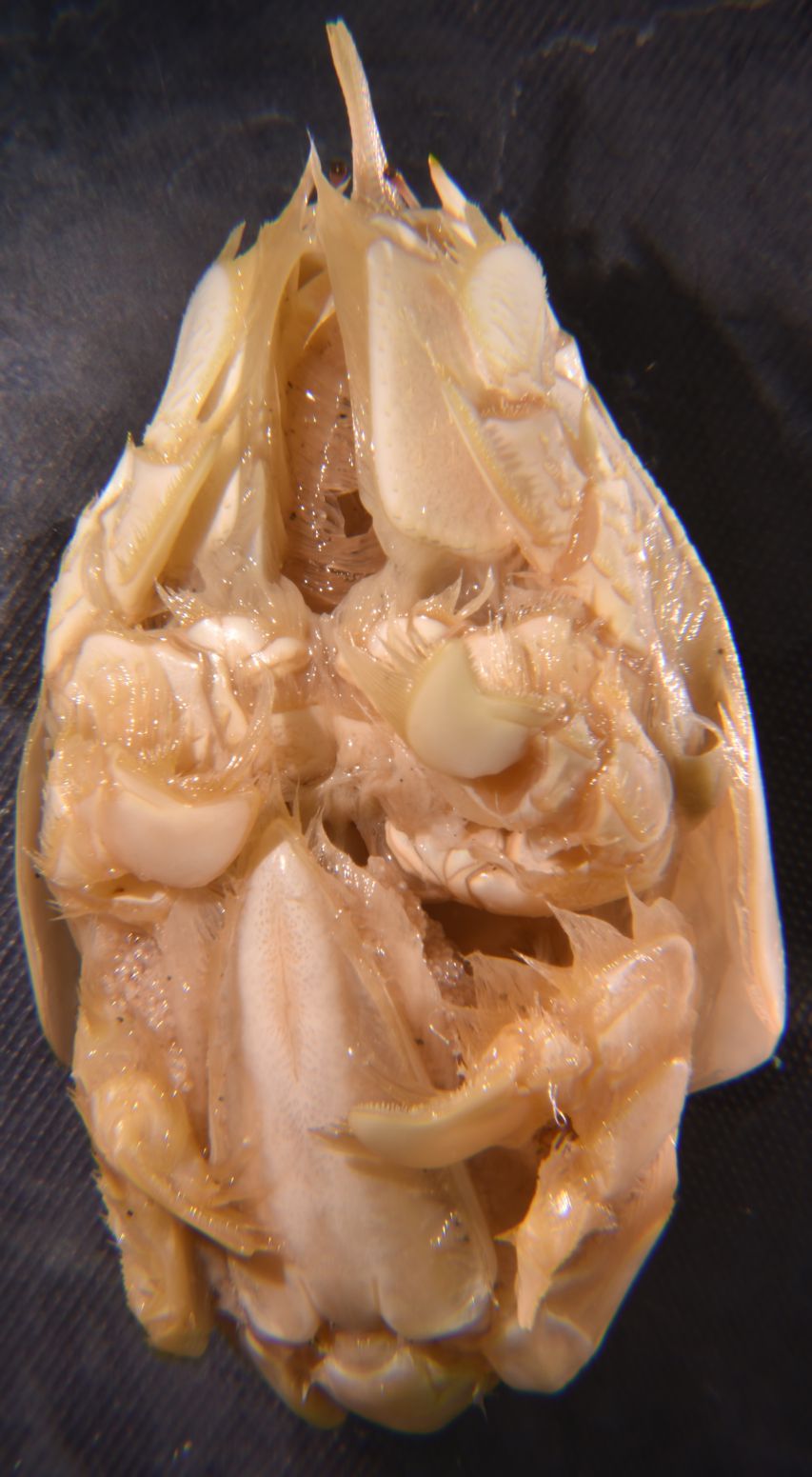 |
 |
| Dorsal and ventral views of a preserved male, 2.7 cm carapace length. In both views the abdomen has been artificially extended. Note the lack of pleopods on the abdomen. Since this is a preserved specimen the true color has faded. | |
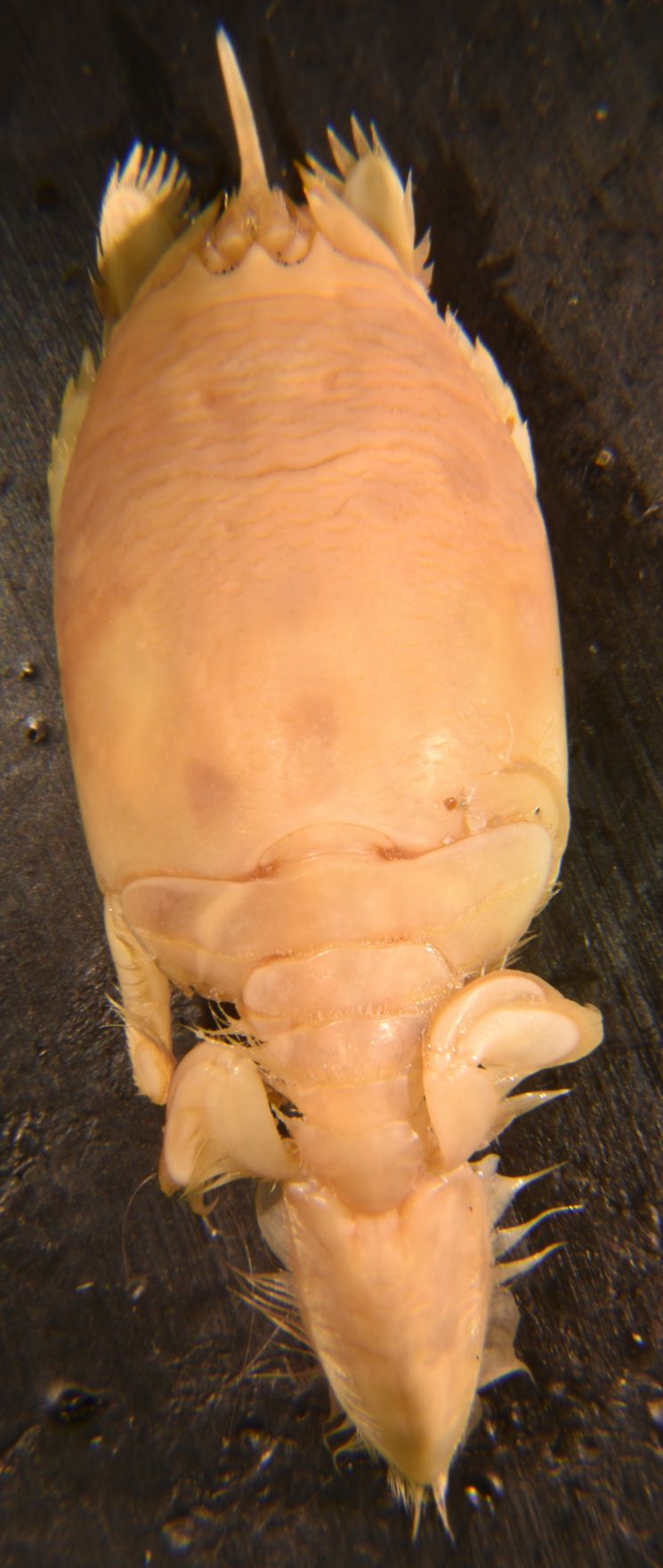 |
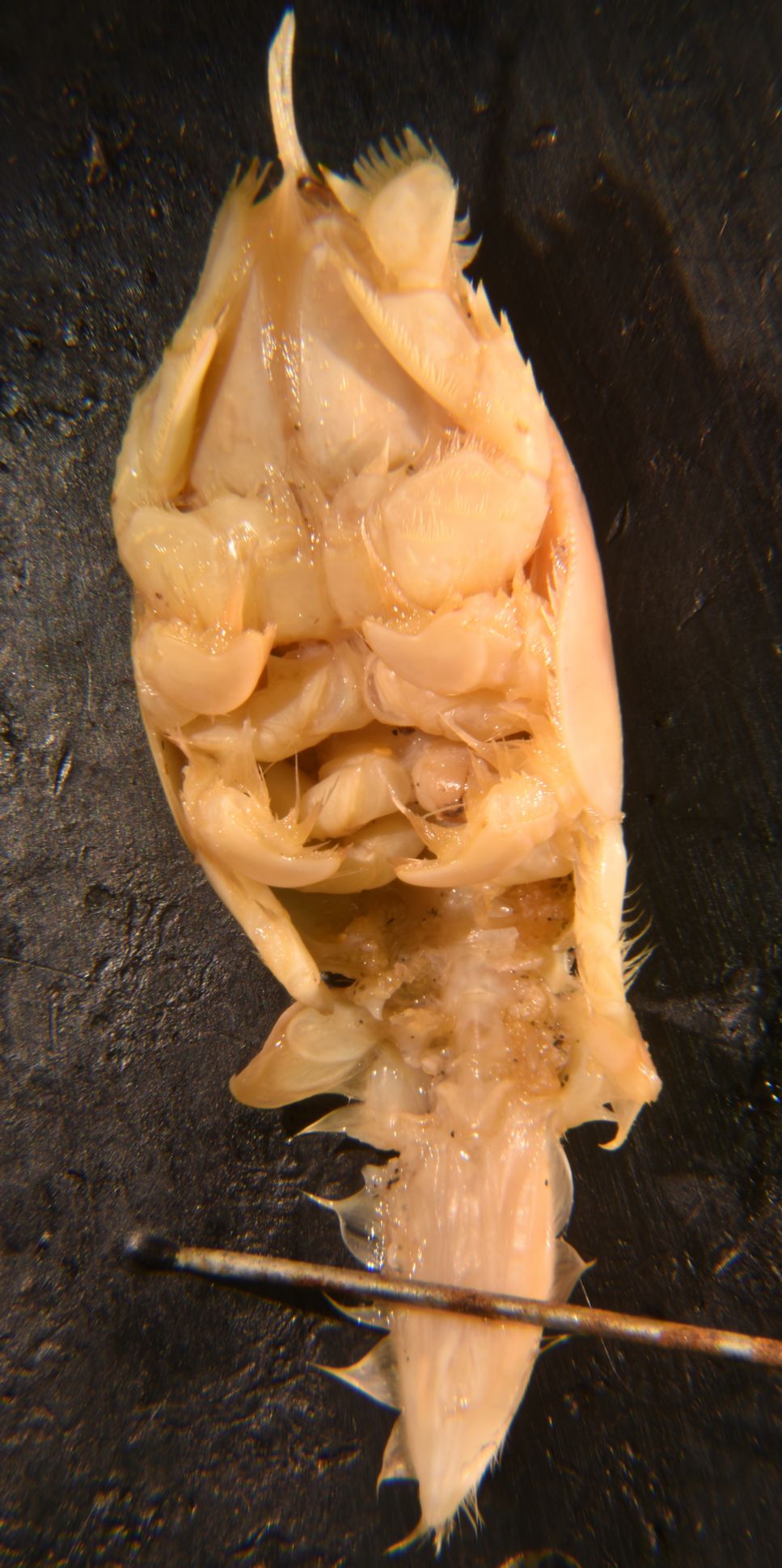 |
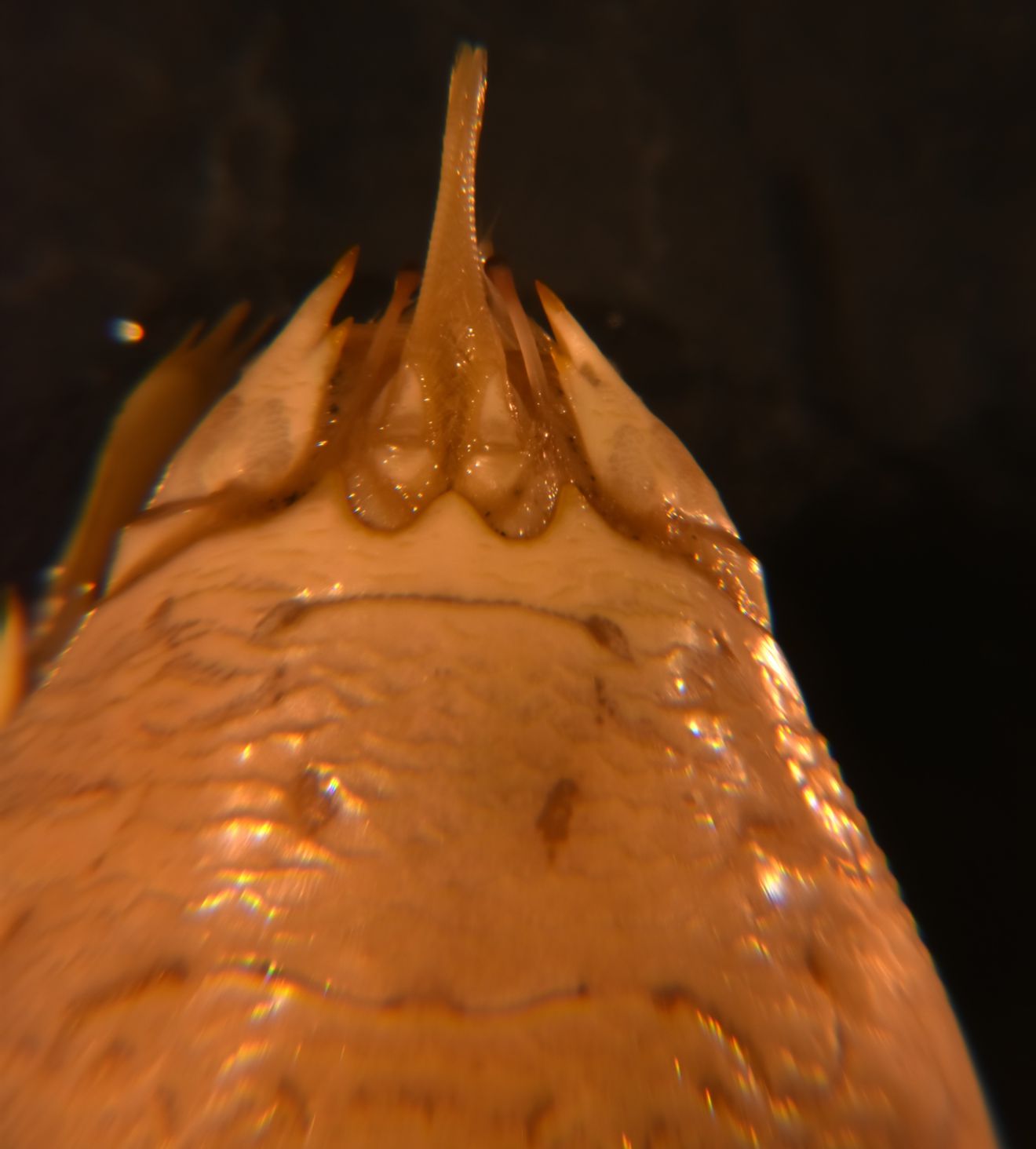
A closeup view of the head of the 3 cm carapace
length preserved female
Click Here
for a movie of a 1.2 cm total-length juvenile rapidly digging into the
damp sand just above the wave swash
zone after I dropped it onto the sand.
| These two photos show a live, mature female Emerita analoga captured from the swash zone of the sandy beach at Warrenton, OR just south of the Columbia River in late August, 2017. Total animal length is 4.5 cm. Photos by Dave Cowles | |
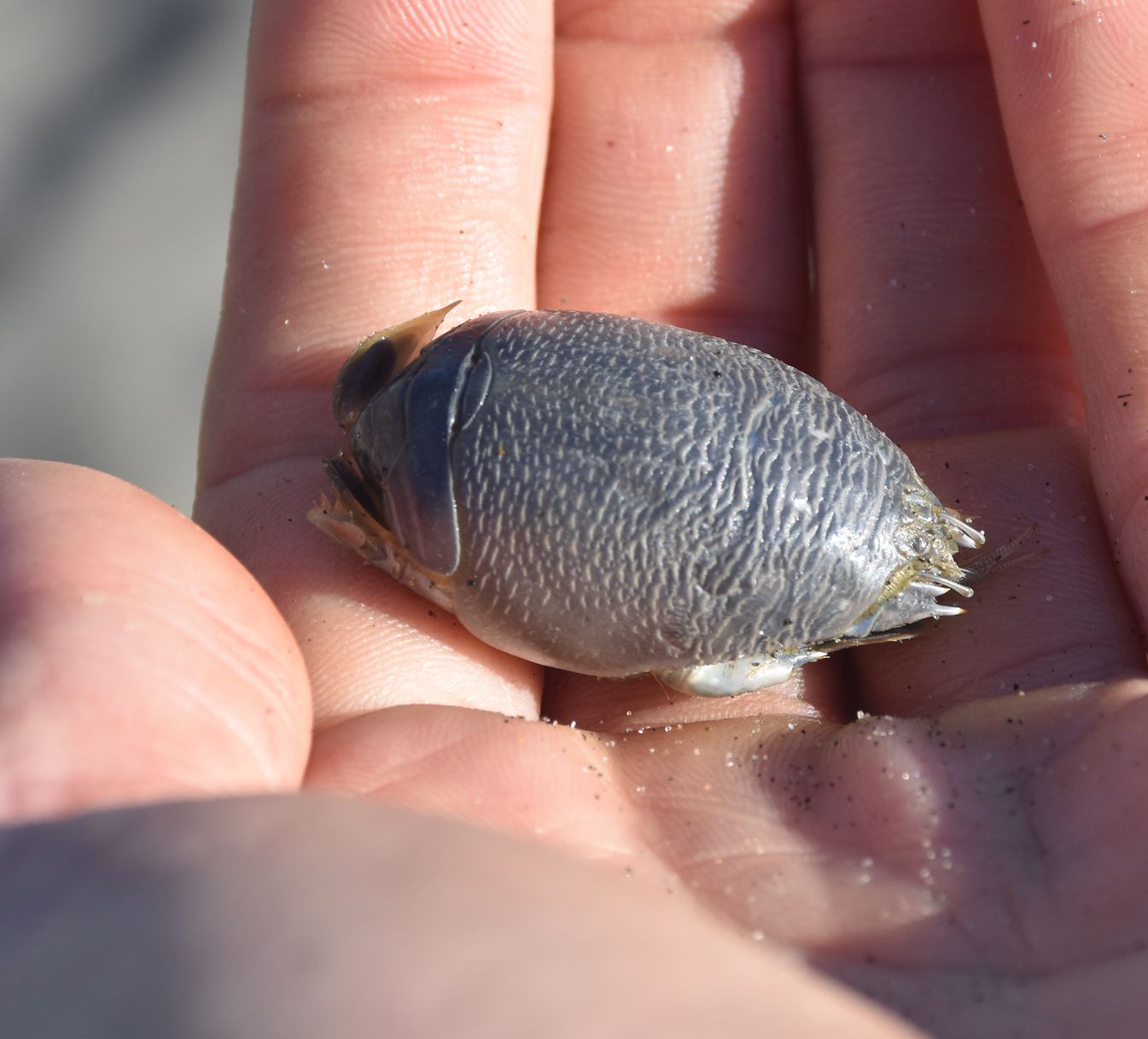 |
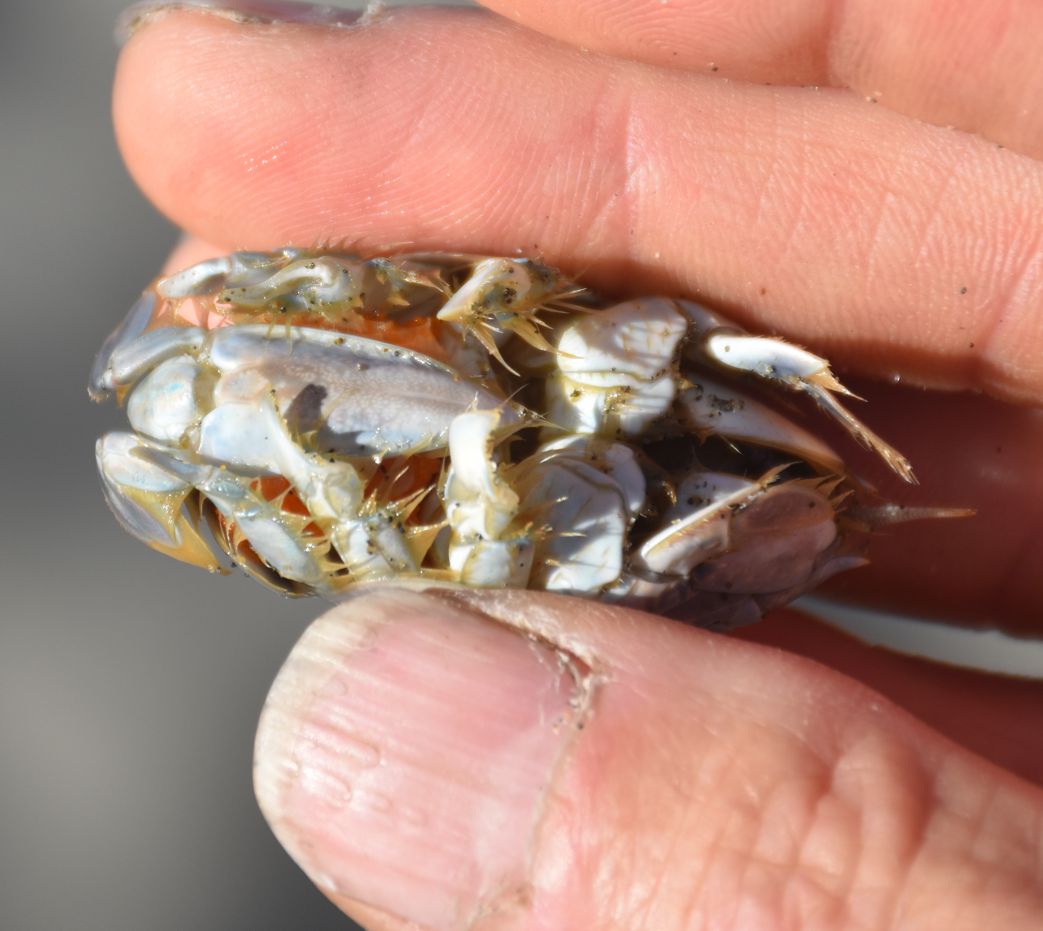 |
| Dorsal view. Note how the carapace is egg-shaped and the animal keeps its legs and other appendages folded underneath, maintaining a 3-dimensional egg-like contour. The head is to the right in this photo. | Ventral view. Note how the abdomen with lits arge, pointed telson is folded loosely underneath the body. The abdomen and telson are used for rapid digging into the sand as each wave begins to recede. She is carrying a batch of orange eggs on her pleopods underneath the telson. Her head, with its feathery antennae, is on the right. |
| The photos below are of a large, dead adult (5 cm long) found washed up on the strand line at Kalaloch, late July 2020. I found no live individuals on the beach that day but based on how intact the remains of this individual are I estimate that it is from an individual that was living recently (because otherwise the winter storms would have destroyed the exoskeleton). This species tends to only be found this far north on or shortly after El Nino years when their larvae get transported far north of their normal range. |
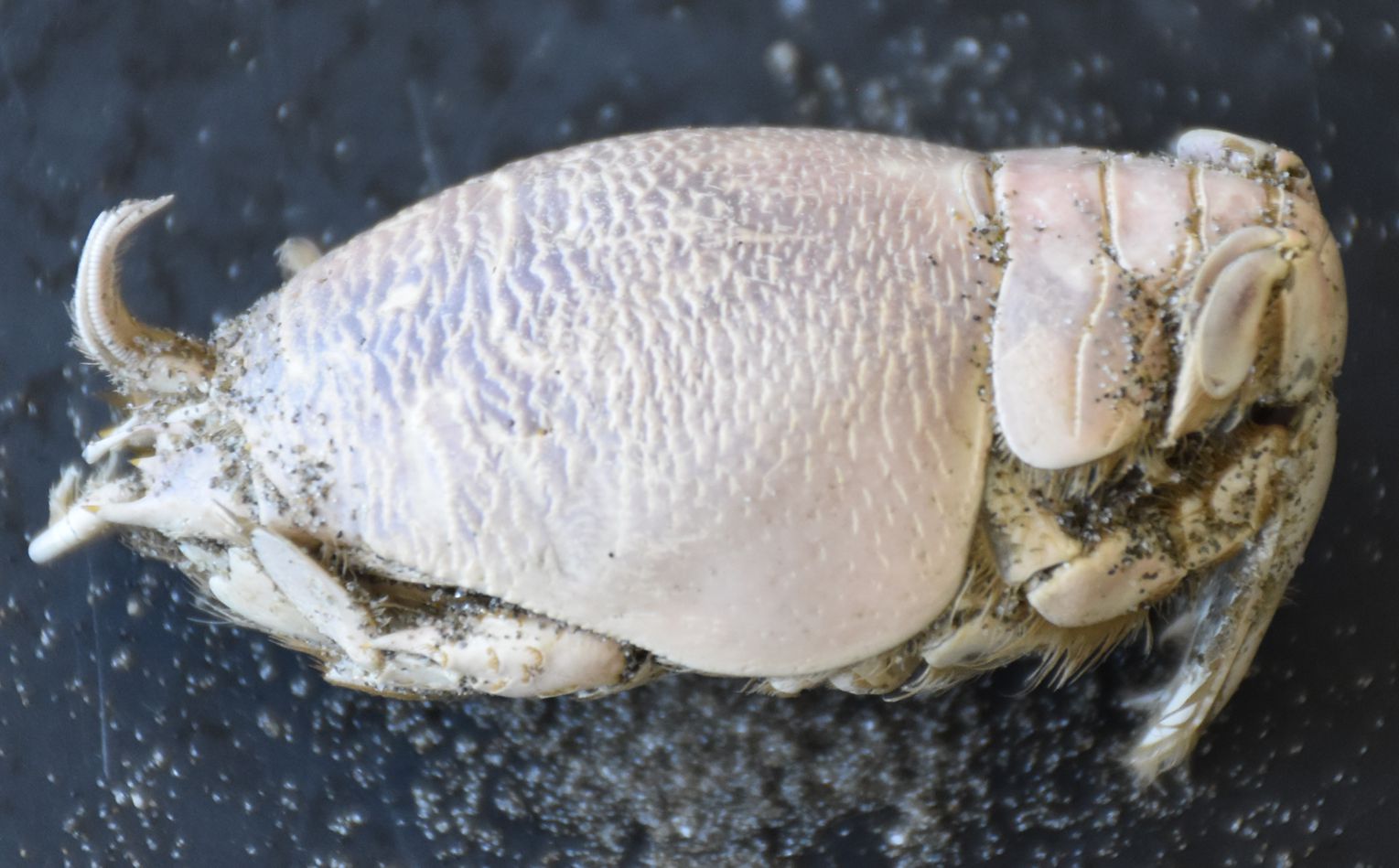 |
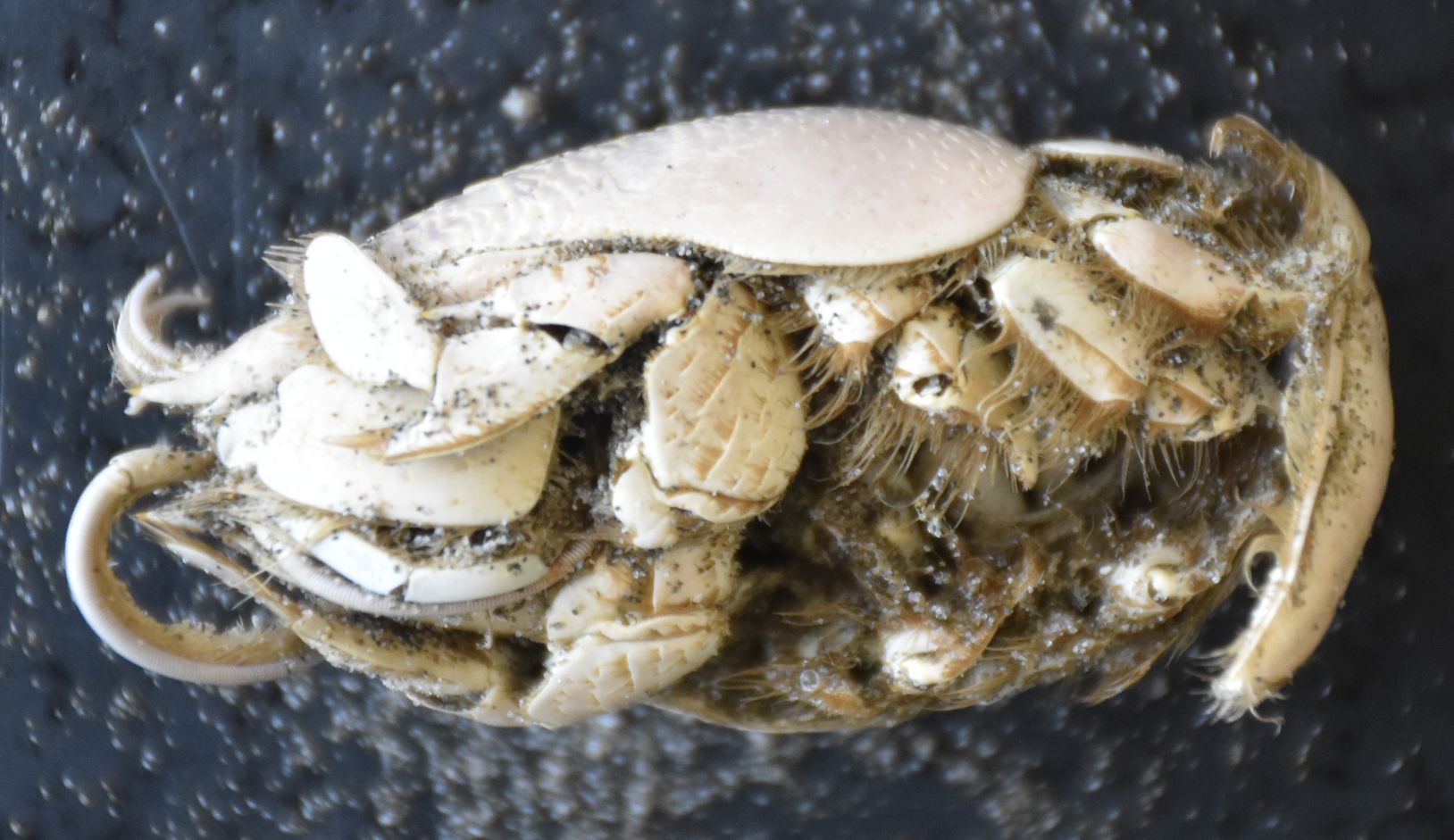 |
Authors and Editors
of Page:
Dave Cowles (2016): Created original page
CSS coding for page developed by Jonathan Cowles (2007)
Salish Sea Invertebrates web site provided courtesy of Walla
Walla University